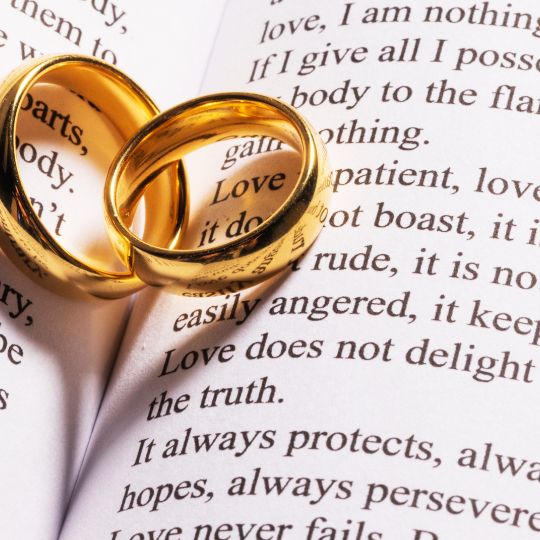Navigating Religion as a Civil
Celebrant
/08
by © Jennifer
Cram - Brisbane Marriage Celebrant Originally published in The Celebrant, Issue 12, June 2022, pp 52-61
Republished 26/12/2022 with the permission of the Editor.
Categories: | For Celebrants | Wedding Ceremony |
"An Absolute must-read article for any celebrant who claims to create ceremonies based on the client's beliefs." - Veronika Robinson
A word to
non-celebrant readers
*A Religious Marriage Celebrant is a celebrant who is legally allowed. on grounds of their own personal beliefs, to discriminate against same sex couples or others . They are listed as such on the Directory of Celebrants on the website of the Federal Attorney General.
 One of the joys, and
also one of the difficulties of being a celebrant,
is that we are free to give couples almost unlimited
choice about the content of their ceremony.
One of the joys, and
also one of the difficulties of being a celebrant,
is that we are free to give couples almost unlimited
choice about the content of their ceremony. Meeting their needs and complying with their wants is often quite straightforward. One ring. Two rings. No rings. One reading. Two readings. No readings. To name just two inclusions. Sometimes, however, it’s a minefield. Of those, religion must be near the top of the list.
Unlike clergy, who must deliver the approved service and adhere to a particular theistic world view, or registrars who, together with Humanist celebrants working under the umbrella of a Humanist organisation, are expressly forbidden to include any religious content at all, there is nothing off the menu for celebrants. And that includes Authorised Marriage Celebrants in Australia, where couples are protected by a ban on celebrants imposing religious content on them, but are free to express their own spirituality in their marriage ceremony if they so wish.
What do I mean
by the term religion?
It is by no means unusual for a celebrant to receive a request for Humanist or Buddhist content (both are non-theist belief systems), or for a generically spiritual ceremony. Most of us see those as business-as-usual requests.
On the other hand, those who come from other religious traditions, such as Islam or Judaism, tend to be very specific about that and about what they would like to include. This makes our job so much easier.
Why couples
request religious content
It is a given that no sooner do you think you’ve heard every possible motivation for requesting inclusion of religious content in what is basically a secular ceremony, someone will come up with a new one. Though you can be confident that, whatever it is, it will fall into one of four categories:
- Misunderstanding/Misinformation
- Respect or concern for family sensitivities
- Clinging to Tradition, or
- Negative Past Experiences.
- They think they are required to include religious content – though in this case it might be phrased as a request to omit something that they understand to be common in religious ceremonies, such as promising to obey
- They think it won’t be a “proper” wedding without some mention of God
- They are superstitious
- They are believers who don’t attend church
- They are non-believers who still cling to a denomination-specific cultural label
- They wish to include religious content out of respect for a member of the family who is a strong believer
- They wish to include religion to appease family members who are critical of their decision not to have a religious wedding
- They come from two different faiths and have been refused an interfaith ceremony by one or both religions
- Their particular faith may have rejected them on grounds of who they are, who they are marrying, their present conjugal status, or their living arrangements
- They may not feel safe in their particular faith or congregation as a consequence of prior abuse.
Which
"brand" of religion?
Some couples are happy to include a general reference to God, others may want to replicate elements of the service or ceremony they would have had, had they had they married or had a blessing ceremony in that tradition.
But again, you can’t just accept what you’re told and leave it at that. While individual religious denominations are brilliant when it comes to staying on brand, in a broad way, there is no guarantee of internal homogeneity when it comes to ritual. Within the Church of England, for example, some dioceses are “Low Church”, that is, they are Protestant in outlook and put little emphasis on ritual or on the authority of the clergy. Others, described as “High Church”, emphasize ritual, priestly authority, and continuity with Catholic Christianity. The rest fall somewhere between those two. Similar variations are found in other denominations, some of which can be indentified geographically. For example, Scottish Presbyterianism is a world away from Presbyterianism in the Southern States of the US, commonly referred to as The Bible Belt, where religious fundamentalism reigns and the husband is supreme!
It is also important to ascertain exactly which denomination in order to ensure that any Bible readings are taken from the “correct” version of the Bible, the one used by that particular denomination.
Your legal
responsibilities and religious
content
For these reasons it is important to manage client expectations. Your Wedding, Your Way, a phrase which has been done to death, has potential to put you in a difficult position. It sends a clear message that you set no boundaries.
Personally, although my belief system is secular and humanist, I strongly believe that I cannot refuse to allow a couple to express their own spirituality in their own ceremony. Equally so, I’m very comfortable with making sure that there is never any implication that I share that belief.
Your
beliefs vs theirs - unpacking
your own boundaries
Some
ways to include religion in a
civil ceremony
- The One Size Fit All Solution
Some years ago, when discussing readings for a secular ceremony with a couple, the bride told me that she rather liked “that reading about love is kind”. My automatic response, “The one from the New Testament?” was met with a completely blank look. She had no idea it was from the Bible. Which makes it just perfect where a non-believing couple, who likely have non-believing friends, wish to include religious content as a mark of respect for a church-going family member. They recognize it, but because neither God nor Jesus is mentioned, it doesn’t jar with others. - The Acknowledge But Don’t Profess
Solution
When I do a Warming of the Rings, I invite guests to “make a silent wish for their marriage or say a prayer according to your own personal belief system.” I’ve seen fractured family relationships, where parents bitterly resented the couple’s choice to have a secular ceremony, healed by those words alone. In one case, the mother of the groom, who had been extremely frosty before the ceremony, held the bag containing the rings against her heart and you could see her lips moving as she prayed. After the ceremony she was warm and accepting, a different woman altogether. - The Simplest Solution
Suggest that God (or Jesus) is mentioned in their personal vow. Start the vow with something simple like “Before God, I ...”, or end it, much in the manner of a prayer, with something like “In Jesus’ name. Amen.” This also works well where one party wishes to include religion and the other doesn’t. - The Readings Solution
Church services usually include three readings, each from different parts of the Bible. In a secular ceremony readings can be a good way to include religious content without giving the impression that you, the celebrant, subscribe to those beliefs. Again, 1 Corinthians, 13 verses 4-8 (or verses 4-13 if you want a longer reading) is a good choice. You can balance it off with a secular reading, or with a reading that, while largely or wholly secular in wording, was penned by a known and respected theologian or member of the clergy. In both cases, how the reading is introduced is key to integrating it into the ceremony in a meaningful way. - The Ritual Solution
The Cord of Three Strands ritual is specifically Christian. But a religious spin can be put on other rituals we consider secular, including invented traditions such as the Sand Ceremony or Unity Candle. When talking about sand, reference can be made to the creation, or religious connotations can be put on the colours of the sand, or on qualities the couple will bring to or strive for in their marriage. The religious symbolism attached to candles and flames could be emphasised in a Unity Candle ritual. Colours of the ribbons or cords used in a hand-tying or knot-tying ritual can likewise be described in religious terms. Alternatively, a couple may choose a ritual associated with a particular faith, such as the Stefana, the crowning ceremony that symbolises the glory and honour that is being bestowed on them by God during the sacrament of marriage. They, or older members of their family, will be able to guide you, particularly if there are regional differences in how a particular ritual is carried out. - The Repeat After Me Solution
As long as each party says their vows out loud, there is no legal requirement that they repeat them after the celebrant. They can read them, or they can repeat them after anyone they choose. Where that person is also a believer, or is the motivation for including religious references in their vows, it can be a heart-warming moment for everyone present. - The Blessing Solution
Parental blessings have a long tradition. They can be secular, however, where parents or grandparents are believers, it can be a lovely touch to have one or more of them come to the front after the vows and ring exchange to deliver a blessing on the couple just before you pronounce them married.
Consider a Tandem Ceremony
Last words of advice
Related
Information
Thanks for reading!

pullin0 Things